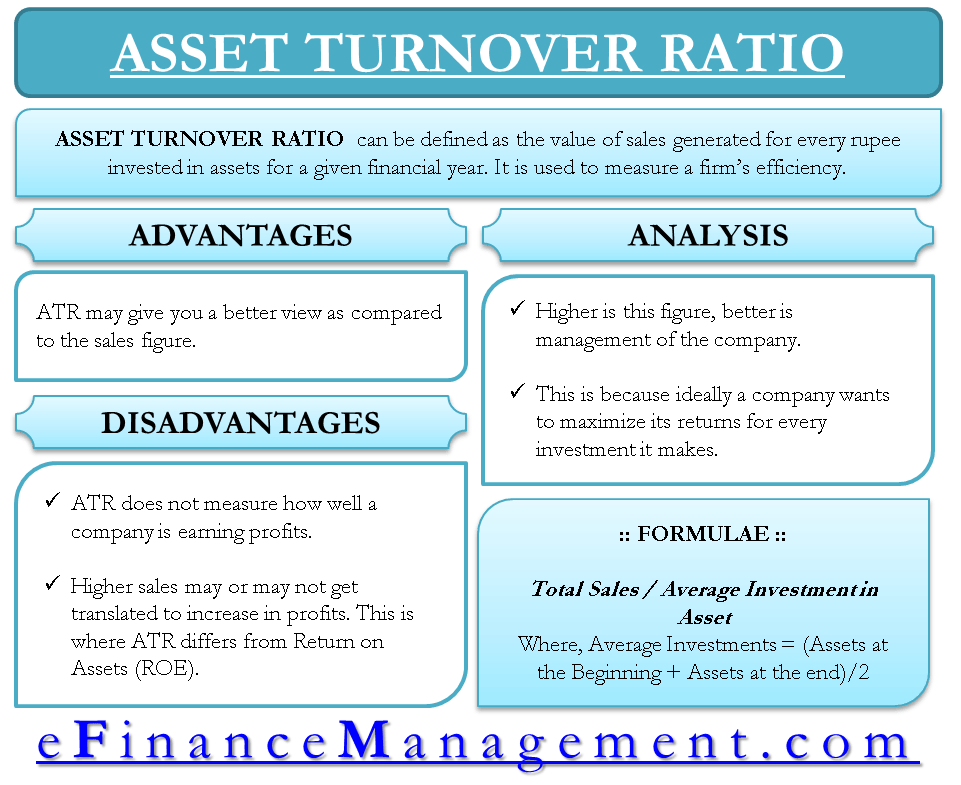

If you can increase sales while holding assets constant (or increasing at a slower rate), total asset turnover rises. The higher the fixed asset turnover ratio, the more effective. If you can cut average receivables, total asset turnover rises. Fixed asset turnover measures how well a company is using its fixed assets to generate revenues. If you can reduce inventory, total asset turnover rises. Fixed asset turnover is determined by dividing the net sales revenue by the average net fixed assets. Total asset turnover gauges not just efficiency in the use of fixed assets, but efficiency in the use of all assets. (Excerpts from Financial Intelligence, Chapter 24 – Efficiency Ratios) The asset turnover ratio determines net sales of the company as a percentage of its assets to establish the amount of revenue realized from each dollar of its. Total Asset Turnover is calculated by dividing revenue by total assets:įor example, if a company’s revenue was $368,689,295 and its total assets was $245,193,936 then its total asset turnover is: Asset turnover ratio is the ratio between the net sales of a company and total average assets a company holds over some time this helps in deciding whether. For every 1 in sales, the firm acquired 3.50 in assets during the period. Total asset turnover indicates the firm’s. Answer to: A total asset turnover ratio of 3.5 indicates that: a. As a result, the business made 3.50 in net income for every 1 in assets. This includes cash, receivables, inventory, property, plant and equipment as well as other long-term assets. A total asset turnover ratio of 3.5 means that the company acquired 3.50 in assets for every 1 in revenue during the year. More specifically, it is the ratio of sales divided. Since many assets are bought and sold during the year, investors and. Asset turnover ratios are a measure of how effectively the company is using its assets to generate revenue.

Next, divide net sales (from the income statement) by that net asset value. First, subtract accumulated depreciation from your total assets on the balance sheet to arrive at the book value of the company’s assets. This ratio tells you how many dollars of revenue (the value) your company gets relative to the amount invested in total assets, not just your fixed assets. Calculating the Fixed Asset Turnover ratio is fairly simple.


 0 kommentar(er)
0 kommentar(er)
